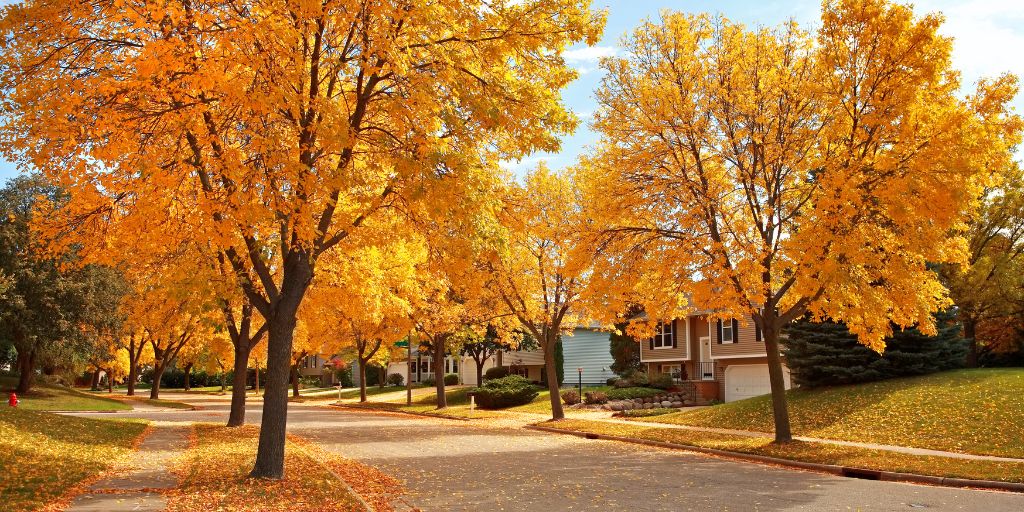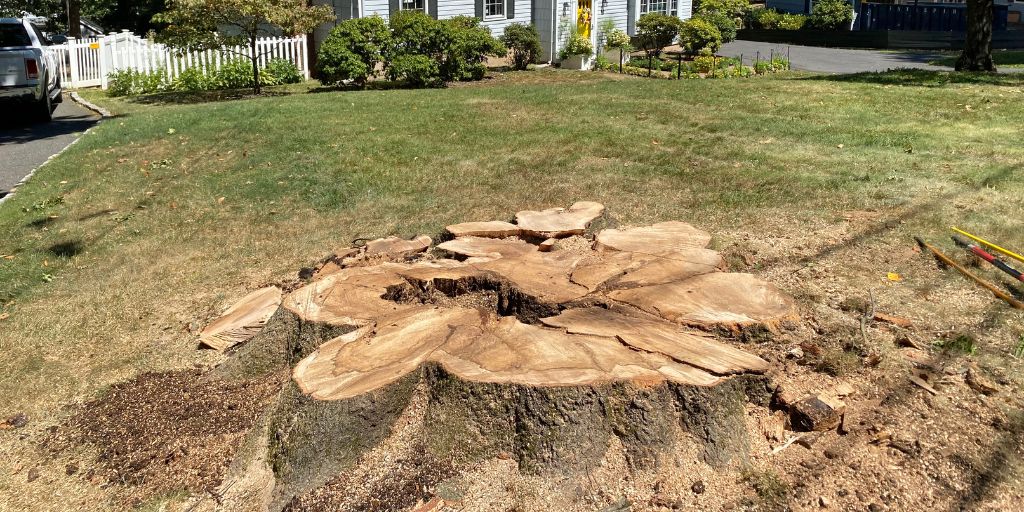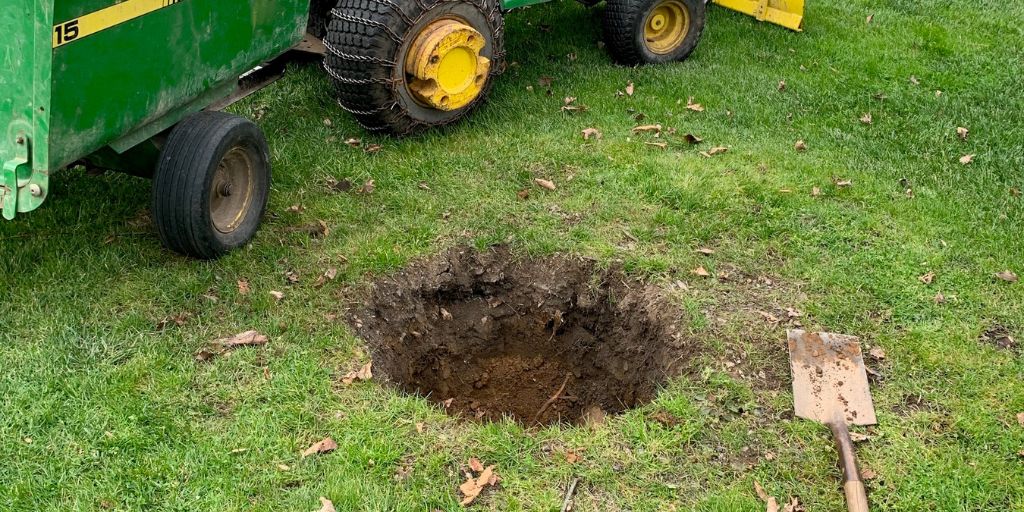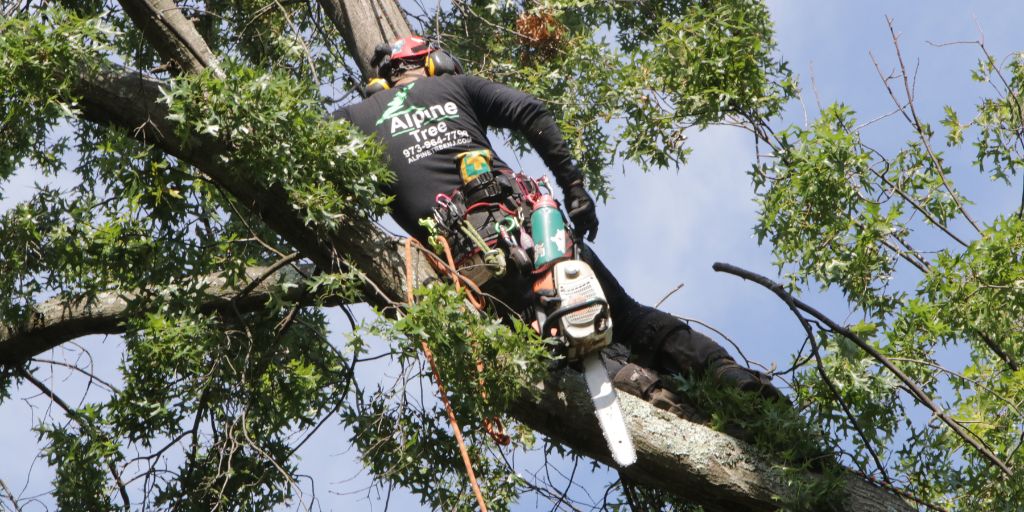If you’ve recently had a tree removed from your New Jersey property, you may have noticed how some things have changed: perhaps your yard isn’t getting the shade it once was, the traffic seems louder, or your energy bills are suddenly higher.
You may also notice some positive changes: you’re no longer worried about invasive roots, dangerous falling branches, or the eyesore of a dead or diseased tree.
There are always positives and negatives to removing a tree from your property, so why would you consider replacing a tree that was just cut down?
In this article, we’ll share some reasons why you should add a new tree to your property after having one removed.
Why Should I Replace a Removed Tree?
There are many reasons to “replace” a tree that was removed from your property. We cover some of the instances below.
Some Municipalities Require Tree Replacements
Many homeowners associations, counties, cities, towns, and other municipalities require trees to be replaced after they are removed. More and more areas are learning to appreciate trees and the many benefits they provide not only to the property owner on which the tree grows but also to the surrounding neighborhoods.
New Jersey lost trees from Hurricane Sandy and other storms, so replacing the trees that were damaged or destroyed is high priority. Several cities in New Jersey have also been designated as “Tree City USA,” and to keep that designation, the area must maintain and grow the tree population.
If your neighborhood, town, township, village, or city requires you to plant a new tree on your property after one has been removed, you often have a limited time in which to do so. Check with your local municipality to check what their tree replacement requirements are.
Tree replacement requirements are becoming more common. Even if your municipality doesn’t require it now, it may become a requirement in the future.
Trees Provide Many Benefits
Loss of a tree, especially a mature tree, means that you are losing a lot of benefits to your property. Trees not only reduce carbon, they:
- Help with asthma symptoms
- Reduce noise pollution
- Provide food and shelter for birds and other wildlife
- Reduce storm damage effects
- Prevent rainwater runoff
- Are proven to help boost moods
- And more
Read additional facts about the benefits of trees in the Morristown, New Jersey area >>
Trees Enhance the Beauty of a City
There’s nothing quite like walking or driving down a tree-lined street. In spring, you can be surrounded by the scent of blooms on the trees, and in fall, the fallen leaves crunch under your feet.
We (often unconsciously) prefer and feel safer in areas with more tree cover. Neighborhoods with more trees tend to be more sought-after properties, and trees that shade sidewalks can increase the “walkability” of an area.
Trees Reduce Energy Costs
You probably already know that a properly placed shade tree can reduce your summer energy costs, but did you know that trees also lower the air temperature around them?
During the winter, some evergreen trees can work as a windbreak, saving you money on heating costs as well.
This means that trees, when planted in ideal locations, can save you money year-round.
Trees Lower the Area Temperature
If you’ve ever heard the term “heat island,” you know how vital trees can be for lowering the temperature of an entire area. While one tree may not seem to make a difference, it does!
Replacing a tree on your property can help ensure that your neighborhood doesn’t become a heat island.
Trees Increase Curb Appeal and Home Values
As mentioned earlier, people are drawn to areas with more tree cover. Trees on your property not only increase your own home’s value but can increase the value of the homes surrounding yours.
Healthy, well-maintained trees and landscapes can improve your curb appeal and improve the value of your home by 3.5% to 15%. Unhealthy trees can decrease the value, so they should be removed.
How trees affect property values in New Jersey >>
Trees Have a Symbiotic Relationship with Other Plants and Wildlife
If your recently removed tree was shading another tree, that tree may now suffer from sunburn, also called sunscald, where the southwest side of a tree becomes damaged from overexposure to sunlight.
Scientists have discovered that trees and plants can “communicate” with each other and share resources through their root systems and a fungus that connects the roots called mycorrhizae.
Removing a tree can impact the other plants and trees around it, so replacing it, even if it is in a different location, can benefit your landscape overall.
Birds and other wildlife also rely on trees for food and shelter. Some may use a thick canopy of leaves to hide from a predator, others may use the seeds or nuts for food. If it is a flowering tree, pollinators such as butterflies and bees rely on the pollen. And trees are a prime nesting location for many birds.
When Should I Replace a Removed Tree?
Check with your county and city first to see if there are specific requirements for your region for how quickly a removed tree needs to be replaced.
If there are no requirements as to when during the year you need to plant a new tree, we recommend planting in the fall. Planting a new tree during the fall months gives the tree time to expand its root system before producing new leaves in the spring.
New trees can also be planted in the spring, but we don’t recommend planting trees during the summer or winter months.
Should I Plant the New Tree in the Same Spot?
It can be difficult to plant a new tree in the same spot as a removed tree for several reasons.
There is a stump left behind
While a stump can be a great spot to place a container with flowers, it is impossible to plant a tree in a spot with a tree stump.
The previous tree’s roots remain
Even if the tree stump was removed or ground with a stump grinder, there are likely networks of old roots underground. While these will eventually decay, it can take years.
A new tree in the same spot may have the same issues
If a tree was planted in the wrong location, a new tree planted in the same spot may have the same issues. If the tree was planted too close to a building or sidewalk, for instance, and the roots became a problem, the same type of tree planted in the same spot will have the same issues as the previous tree.
If a tree that requires full sun was planted in a shady spot, a new tree that also requires full sun will fail if planted in the same location.
Some locations receive too much water for most trees to survive, while others may not have the right kind of soil, are too compacted, or have other issues that can cause stress to trees.
If a pest or disease caused the decline of your previous tree, planting in a new location lessens the risk of that pest or disease spreading to your new tree.
Plant the New Tree in a New Location
For all these reasons and more, we recommend that your new tree be planted in a different location on your property.
Why Remove Trees if They Need to be Replaced?
If replacing a tree after one is removed seems like too much of a hassle, you may wonder, “why remove a tree in the first place?”
If a tree is being removed for only aesthetic reasons, you’re right, we wouldn’t recommend removing it.
However, most trees are removed because they are dead, decomposing, dangerous, invasive, or planted in the wrong spot. In these instances, it can become a hazard if the tree is not removed. Dead and dying trees can become brittle and are more likely to fall. Trees suffering from a pest or disease may spread the disease to other neighboring trees. Invasive trees can cause problems to the local ecosystem as they spread and negatively impact native trees and wildlife.
Trees planted incorrectly will need to be removed because they won’t survive long in locations in which they are not suited. Or it may have outgrown the space – while all trees start out small, it’s always important to learn the mature size of a tree before planting it.
Of course, there are other reasons to remove a tree – it may be damaged from a storm, it may have fallen on its own, it may be dangerously leaning, etc.
You can learn more about tree removals and why a tree might need to be removed on the removal page of our website.
Contact Alpine Tree for Your Tree Removal or Tree Consultation
If you own property in the service area in which Alpine Tree provides tree care services, contact us today to schedule your tree removal or tree consultation. We can remove your trees quickly, safely, and professionally.
Not sure if your tree should be removed? Schedule a tree consultation with Alpine Tree, and our experts will advise you whether your tree can be treated or if it should be removed.








